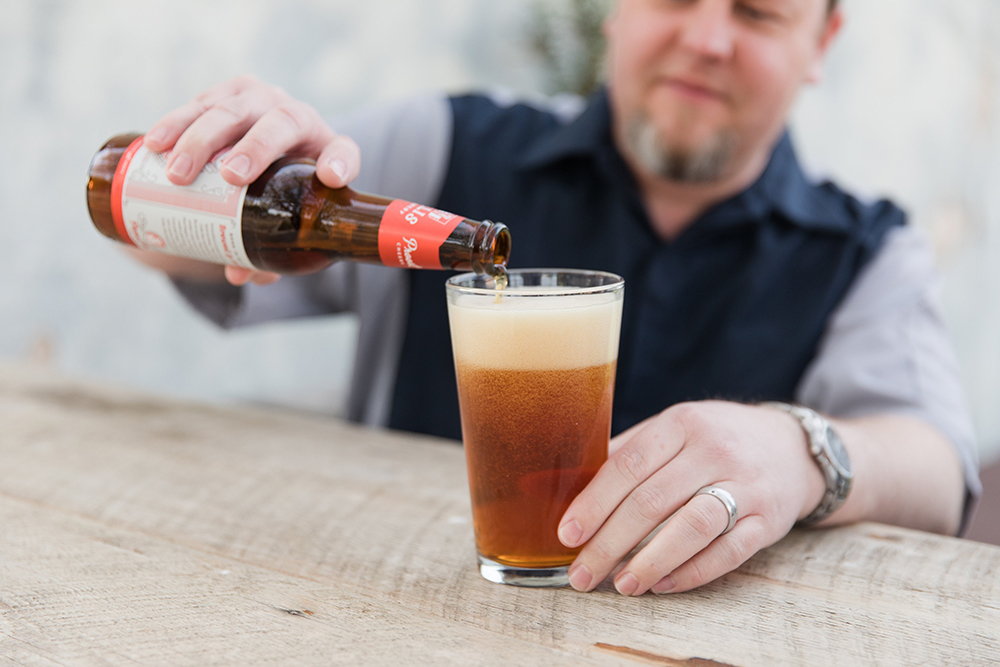(ROCKWALL, TX) What is a lager? What is an ale? Is there a difference? A common misconception is that lagers and ales are beer styles, when they are actually different classifications of beer. Much the same way you could classify animals as mammals and reptiles.
The difference between lagers and ales is what type of yeast is used during the fermentation process. Most brewers will tell you the most important ingredient in making beer is yeast. It has been said that brewers make yeast food, they do not make beer. Yeast are actually living organisms that convert sugars into ethanol and CO2. There are two main classifications of yeast used most commonly in brewing: Lager (bottom fermenting yeast) and Ale (top fermenting yeast). They are different species of yeast that behave in different ways. They actually congregate while fermenting near the top of the vessel for ale and near the bottom of the vessel for lager.
Ale yeast like a warmer temperature during fermentation, normally around 65 – 70 degrees F. They are usually more active and ferment faster than lager yeast. Ale yeast produce more esters than lager yeast. Esters are another byproduct of fermentation. Esters are compounds that have a wide variety of aromas and flavors that add to the finished product. Some of the more common esters are fruity or spicy. Common ales you will find are Belgian styles (ex. Avery Reverend), German Hefeweizen (ex. Franziskaner) and Saision (ex. Funkwerks). These styles of beers will be ready for packaging in two to three weeks.
Lager making is beer making in slow motion. The lager yeast is much less active than ale yeast. They like cool temperatures during fermentation, normally around 48 – 55 degrees F. The lager yeast will produce a very crisp and clean profile with a very light amount of esters. It is actually a flaw in most lager styles to have a high amount of esters. Common lagers you will find are German Helles (ex. Independence Cowboys from Helles), Pilsners (ex. Bavik), German Bocks (ex. Red Gap Big Chief) and Dopplebocks (ex. Aventinus). There is an extra step normally used in lager making. This is where they get their namesake. In German, lager means to store. The beers are “stored” or conditioned at colder temperatures, sometimes as cold as 32-34 degrees Fahrenheit. These styles of beers will be ready for packaging in six to eight weeks.
Lagers and ales are not in competition with one another. Rather, it is a matter of time and yeast that create the discernable differences. Each beer style must run its own race. Stop by the shop today and let us introduce you to lagers and ales.
Cheers!
Jason Roe, Beer Geek
 Beer Geeks is a craft beer bottleshop located in downtown Rockwall. We have over 275 craft beers from all over the world. Everything is organized by style and priced as singles, so you can build a custom pack out of anything, everything in the store. Where it’s okay to geek out about beer! BeerGeeksShop.com | Photography by Meggie Taylor. This is a sponsored guest column appearing monthly in Blue Ribbon News and online at BlueRibbonNews.com.
Beer Geeks is a craft beer bottleshop located in downtown Rockwall. We have over 275 craft beers from all over the world. Everything is organized by style and priced as singles, so you can build a custom pack out of anything, everything in the store. Where it’s okay to geek out about beer! BeerGeeksShop.com | Photography by Meggie Taylor. This is a sponsored guest column appearing monthly in Blue Ribbon News and online at BlueRibbonNews.com.
 Our monthly print edition is delivered free to ~22,000 homes in Rockwall and Heath, TX.
Our monthly print edition is delivered free to ~22,000 homes in Rockwall and Heath, TX.
To share your good news and events, email editor@BlueRibbonNews.com.
Subscribe to our email newsletter here.
Advertising: 214-342-8000 or advertising@BlueRibbonNews.com.








